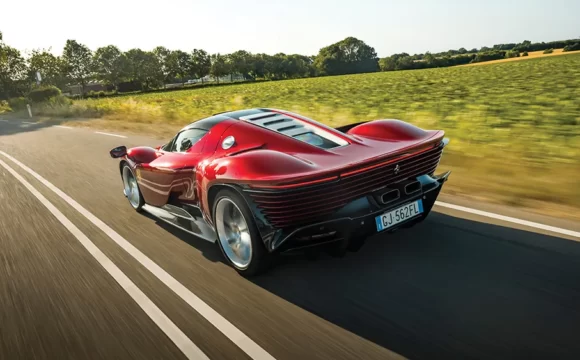Six greatest concept cars by BMW
BMW may be famed for producing vehicles today, but when it was founded on 7 March 1916 (which makes this year its 100th anniversary), it supplied engines destined for use in military aircraft. In fact, it didn’t make its first vehicle – a motorcycle – until 1923, and its first car would only roll off the production line five years later in 1928.
It would go back to being a military supplier during the dark years of the Second World War, when the production of cars took a back seat to military aeroplane engines and motorcycles. The postwar years were not kind to BMW, and its finances were so bleak that it was almost sold to Daimler-Benz in 1959. Thankfully, BMW’s New Class of 1962 brought profitability and the rest is history – specifically, a history of producing sporty, great handling vehicles.
BMW’s production vehicles are great, but it also needs to dream, and dream it does with its concept cars, a small sampling of which we’ve curated here.
1. Turbo
Year: 1972
Turbo was built to celebrate the 1972 Olympic Games in Munich. Notable for its striking wedge shaped profile, then-revolutionary high-performance turbocharged engine and advanced safety technology, Turbo is also significant for being the most direct visual link to BMW’s first supercar, the M1. Other elements introduced in Turbo that are now ubiquitous in modern BMWs are a centre console canted towards the driver and its eponymous turbocharged powerplant.
2. Z07
Year: 1997
It’s easy to be cynical of near production concept cars like the Z07, but when that is inspired by the heart-melting lines of the 507 roadster, that transgression could most certainly be forgiven. Even more so when said near-production concept is powered by the fire breathing V8 from the M5 of the time. Suffice it to say, when BMW exhibited the Z07 at the 1997 Tokyo Motor Show, it created a bit of a stir, so it’s no wonder all 5,703 units of the production car (called Z8) sold out.
3. Z9
Year: 1999
Introduced at the 1999 Frankfurt Motor Show, the Z9 debuted former design chief Chris Bangle’s most controversial design idioms (“Bangle Butt" and “flame surfacing") that debuted on the E65-generation 7 Series two years later. The concept also ushered in a new era for technology – the Z9 introduced LED tail lights and the iDrive infotainment system that incorporated a centrally mounted screen, both of which are now staples in the BMW range.
4. X Coupe
Year: 2001
Similarities between the X Coupe and the E85-generation Z4 can be clearly seen, but the X Coupe will be remembered for giving us a brief taster of what BMW had in store for its X series SUV line-up. Despite looking relatively compact in photos, the X Coupe was built on X5 underpinnings, and would introduce the world to the idea of a coupe/SUV hybrid, a good six years before the production X6 was first launched.
5. Vision EfficientDynamics
Year: 2009
There are some who will point to the M1 Hommage of 2008 as the concept car that influenced the i8, but Vision EfficientDynamics, which made its debut at the 2009 Frankfurt Motor Show, is the hybrid sports car’s most obvious visual and mechanical forebear. The futuristic styling and hybrid drivetrain with a three-cylinder combustion engine (though in the concept car, it’s a diesel, not a petrol as used in the production i8) are present here. Vision EfficientDynamics would also preview the styling language that would underpin all BMW i models. Interestingly enough, Vision EfficientDynamics had an aluminium chassis and body panels, while the production i8 features an even more exotic carbon fibre chassis and thermoplastic skin.
6. Vision Next 100
Year: 2016
It should probably go without saying that during centenary celebrations at its Munich headquarters, BMW should unveil a concept car that points the way forward for the next century and beyond. Fittingly, that took the form of a sporty saloon, with such icons as the 2000 tii and M5. However, thanks to autonomous driving technology, BMW wants to turn the “ultimate driving machine" into the ultimate self-driving machine. The Vision Next 100 also has a shape-shifting interior that presents a driver-focused cockpit when a person is driving, or transforms it into a mobile lounge when in autonomous mode. Many aspects of the Vision Next 100 concept might seem a long way off, but more immediately, its styling could provide clues on what the upcoming i5 saloon could look like.














